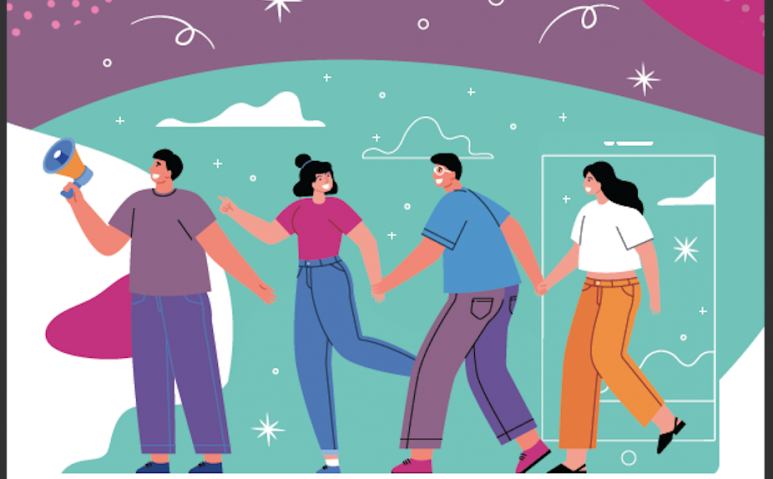By: Ivana Jelača
In Serbia, youth portals are the most likely to report about marginalised communities, and include more women than men in their reporting.
Our ‘MLADI: Media Literacy Alliance and Digital Importance’ project conducted research that found that youth media portals are more open for controversial topics compared to mainstream media. We also found that these outlets approach such topics analytically rather than sensationally often including a large number of opinions, suggesting solutions and referring to scientific evidence. Media outlets such as Vugl, Noizz and Vice tend to cover topics that mainstream media often ignores, particularly the environment and issues impacting traditionally marginalised communities. When Serbia recently faced abnormally high air pollution levels, the best articles could be found in these outlets. Youth activism is completely ignored in mainstream media, and Vugl’s coverage of Greta Thunberg and the youth leaders spurring the climate movement forward is just one more example of their excellent coverage where mainstream media has been silent.

Several most popular youth portals offer a modern approach – from more attractive design, language and style to the selection of topics. They also tend to use multimedia tools and offer different additions to the text – from podcast, vlogs, memes, and illustrations for Twitter, Facebook and Instagram posts – something mainstream media do not do as often.
Research suggests there were no cases of discrimination of young people on any ground (gender identity, sexual orientation, religion, ethnicity…). However journalists and media content creators, particularly tabloids, should pay attention to other aspects of the Serbian Journalists’ Code of Ethics that they violate on a daily basis.
A lack of respect for the national Code of Ethics continues to be a very problematic issue. Most often, the regulatory body for electronic media is not reacting to misconduct (and have not accepted the invitation to take part in the research) while the (Serbian) Press Council is a self-regulatory body and has limited possibilities to act. The Press Council has been monitoring media reporting and one of its conclusions is that tabloids have made major mistakes when it comes to reporting on children. The recent rape and kidnaping of a 12-year old child demonstrated how deep the sensationalising and pursuit of profit can go, with no regard for the victim.
‘Youth in the Media Mirror 2019’ research was done as continuation of two previous research projects with slightly broader methodology. Previous research shows that youth is predominantly depicted as decadent, violent, vulgar, superficial, and uninterested in cultural contents. These inaccurate representations contributes to a deepening misunderstanding across the generation gap.
Our research shows that the increase in reporting about youth, coincides with a significant increase in coverage of violence and attacks among young people. Public service broadcasters have improved the most – from opening the space for youth to be quoted before state officials, or other ‘authorities’ and adults relevant for the subjects to paying attention to the gender balance and gender perspective of all the topics they covered and reporting about youth from marginalised communities, identifying their experiences without reverting to problematic stereotypes.
However, apart from the broadcasters, media continues to approach youth topics with a superficial approach, reflected in the fact that security was the predominant topic (which often translates to violence among youth) with youth activism as one of the least reported topics. Recently the Balkan-based NGO Youth Initiative for Human Rights received the human rights award from the Council of Europe. Mainstream media has ignored it almost completely, a common trend in Balkan media outlets, that do not recognise awards that highlight diverse and pluralistic societies.
This year the research has also included an analysis of the fifty most popular YouTube channels. Eight of these channels have more than 1 million followers in Serbia; this is a huge number considering that Serbia only has seven million citizens. Surprisingly (or, perhaps, not), two thirds of media content creators are men and the most popular female YouTuber is ranked sixteen on the list of most popular YouTubers. A handful of them even come from rural parts of Serbia, showing that social media is a way to bring everyone that has an Internet connection together.
Gaming content is by far the most popular among the 1000 clips taken into account. Although there has been a lot of discussion lately about the toxic environment on Serbian Youtube, research shows that this isn’t necessarily bad for YouTubers. Some YouTubers try to gain followers and notoriety through so-called dramas – arguments between two YouTubers often include curses, bad vocabulary, even hate speech. On the other hand some popular YouTubers respect the platform’s community standards, use decent vocabulary and even participate in humanitarian actions. Interviews with relevant experts from diverse backgrounds were part of the research. Most of them agree that IT companies including Facebook, Youtube and Twitter do not do enough to regulate and moderate the content in Serbian language, and more work is needed on moderation as well as to adapt the general policies of the company. This could result in reducing hateful content and online violence in Serbian YouTube scene.
